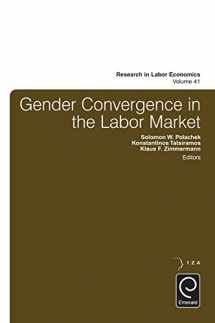
Gender Convergence in the Labor Market (Research in Labor Economics, 41)
Book details
Summary
Description
For most countries, women's labor force participation and hours of work has risen while men's have fallen. Concomitantly, men's and women's wages and occupational structures have been converging. This volume contains new and innovative research on issues related to gender convergence in the labor market. Topics include patterns in lifetime work, earnings and human capital investment, the gender wage gap, gender complementarities, career progression, the gender composition of top management and the role of parental leave policies. Among the questions answered are: Do the levels of and returns to human capital change over the last 50 years in the US? Can the shorter fecundity horizon for females (a biological constraint) explain the division of labor in the home and the resulting wage gap? Does skill-biased technological change favor women's wages more than men's? Do care sector jobs incur a wage penalty? What impact does this have on firm and employee outcomes? Does the glass-ceiling faced by women in top management relate to fertility and parental leave policies and having children? And finally, are men and women complements or substitutes in the labor market?


We would LOVE it if you could help us and other readers by reviewing the book
Book review



